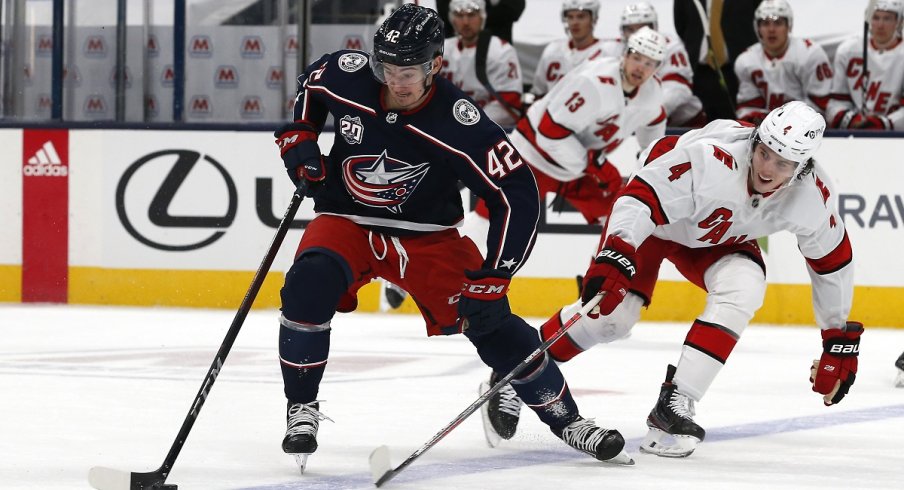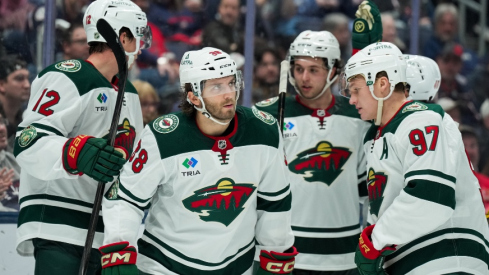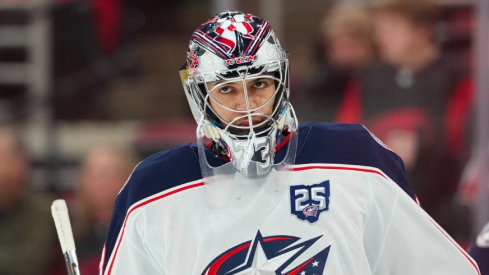In the youth hockey and minor professional hockey worlds, 'player development' reigns supreme. Long-term player/athlete development has gone from a talking point to front and center in USA Hockey and Hockey Canada education literature.
But interestingly enough, these conversations can easily dissipate at the NHL level, depending on where a team is in its life particular cycle. Coaches and managers need to win games to self-preserve. That, plus a lack of practice time (especially in the current environment) means that games become the teacher and the exam for player development.
Put simply, the Columbus Blue Jackets are struggling to balance trying to win hockey games and development at one of the most important positions on the ice - center.
The club swapped winger Josh Anderson for Max Domi with the intent of moving the former Montreal Canadien back to his preferred position in the middle of the ice. That experiment hasn't worked out, to put it lightly, and Domi has played everywhere from first-line center to fourth-line winger. After trading Pierre-Luc Dubois for Patrik Laine and Jack Roslovic, the club's strength down the middle faded again. When Mikko Koivu retired days later, the depth diminished even further.
The Athletic's James Mirtle wrote that the Blue Jackets are tied for the fourth-youngest roster in the NHL, at 26.8 years old, nearly a full year younger than league average. The Blue Jackets are no longer interested in being the young, upstart team that catches teams off guard. After four consecutive playoff appearances, many fans, too, are tired of hearing about the youth as a justification for what could (should?) be.
That puts John Tortorella and his staff in an unenviable position. He recognizes that he needs to continue to develop his young players - many of whom the organization sees as long-term centers, but he also needs to find a way to win hockey games. It's a difficult balancing act, and it's not been going well.
“I’m not sure where it all goes there. I still need to develop centers. I’m not sure,” Tortorella said after last Tuesday's 6-5 shootout loss to the Chicago Blackhawks. “I needed to change it. Things were stale. It was on my mind coming into the game.”
But that changed just two days later, when Tortorella placed Nick Foligno as the first-line center and Domi as the fourth-line left wing.
Projecting some new lines tonight.#CBJ | @BlueTech_Inc pic.twitter.com/xhWMvaiRSv
— Columbus Blue Jackets (@BlueJacketsNHL) February 25, 2021
In his defense, Tortorella's lineup deployment calculus involves many players. Foligno and Boone Jenner can play center, sure, but both are wingers in an ideal lineup. Riley Nash should be the club's fourth-line center, but even he's been elevated into an occasional third-line role due to struggles elsewhere in the lineup. But playing Foligno or Jenner at center, or playing Nash as the 3C, is a short-term bandaid for long-term pain.
Roslovic came to Columbus hoping for an opportunity, and he's exceeded expectations offensively. He's had some defensive struggles along the way, especially considering that he's incredibly sheltered, starting a team-high 81.08% of his 5v5 shifts in the offensive zone, per NaturalStatTrick. Per NHL.com, his 33.5% faceoff win percentage is 170th out of 171 players (minimum 50 faceoffs) this season.
Then there are the wild cards: Domi and Alexandre Texier. As mentioned, Domi has struggled to produce offensively (3-4-7 in 23 games) and lack of confidence seems to be a major contributing factor. Even at his best, defense was never his calling card, and his lack of offense has led the Blue Jackets to move him into a lesser role. Playing the 25-year old alongside checkers like Nash and Eric Robinson is hardly a way to increase a player's offensive confidence, though. Texier has produced 4-4-8 in 23 games this season, playing mostly center in a second line capacity. His defensive lapses have been an issue, and he ranks 169th out of 171 in faceoff win percentage this season, but the organization sees the 21-year old as a center long-term.
Perhaps more than any other two players, Domi and Texier embody the development vs. winning balancing act. Should Domi be playing higher in the lineup? Developmentally, yes. Does that give the team the best shot at winning a game today? Tortorella clearly thinks no. Similarly, should Texier be playing center if the team is interested in winning that hockey game over, say, Jenner? Perhaps not, but it's in the interest of the organization to give him game reps even if he struggles. In Sunday's listless loss to the Nashville Predators, Texier played just 7:58. Meanwhile, Foligno skated 20:29.
Then there are the tweeners. Kevin Stenlund has also struggled with some defensive assignments as a center, but the coaching staff has given him opportunities as high as second-line center. He's likely a 3C ceiling with a 4RW floor, and this could be a make-or-break year for the 24-year old pending RFA. It's perhaps telling that, even with all of this complexity, Mikhail Grigorenko, who played center in the KHL the past few years, has been banished to the wing, when he cracks the lineup at all. And Liam Foudy, who was seen as a potential contributor heading into the season, has been sent to the AHL for some ripening.
The Blue Jackets have upwards of 10 players that can play center in a game. None of them profile as a prototypical first-line center, and it's hard to say with confidence that any of them will ever replace Dubois. For Tortorella, finding the balance between trying to win hockey games today and developing players for the organization's near and long-term futures has proven to be a difficult balancing act.
Will a development-first philosophy mean frustrating nights and growing pains? Yes, I would think so. But if the season is drifting away (MoneyPuck.com gives the Blue Jackets an 5.9% chance of making the playoffs, the third-lowest in the NHL, whereas The Athletic gives them a 4% chance), what - honestly - is the argument for maintaining the failing half-in, half-out experiment?


